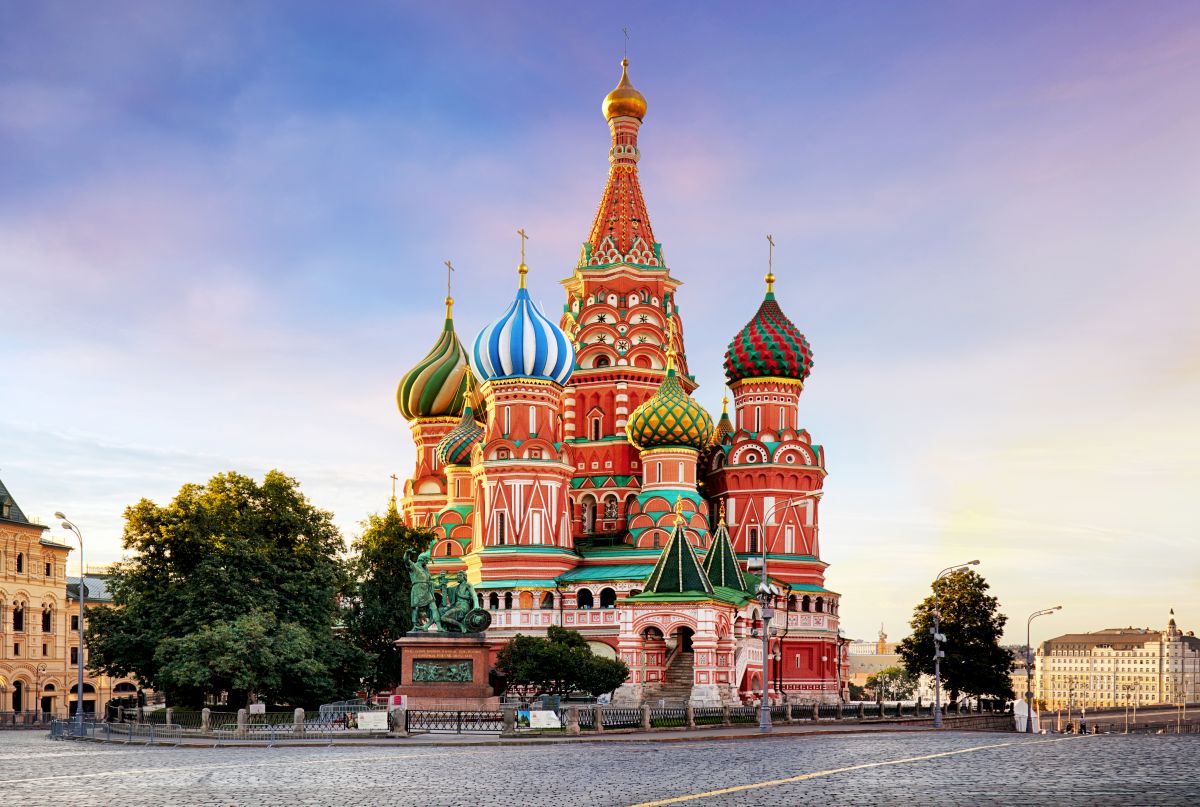
© Shutterstock
Location: Moscow, Russia
Belief: Orthodox Christianity
Era: 1561 CE
St Basil’s Cathedral in Red Square is one of the most striking pieces of architecture in Moscow ever constructed, recognisable across the world with its nine onion-shaped domes, each with a unique design.
Originally, a Trinity Church was built on the site from 1366 to 1368 CE. The stone cathedral was built to replace this previous church between 1555 and 1561 CE under the instructions of Tsar Ivan IV (the Terrible) after the capture of Kazan in Tatarstan, as part of his Astrakhan military campaign. The battles between the Byzantine Christians and Ottoman Muslims had been going on for almost a century at this time. Greeks had fled Constantinople when it was captured by the Ottomans on 29th May 1453 CE after a long siege, but the Ottoman Turks failed to get a long-term foothold in Russian lands.
St Basil the Blessed was one of the ‘Fools for Christ’, who denounced worldly goods and lived in poverty to concentrate on his faith. He often spoke out against Tsar Ivan for his behaviour but was not mistreated and was often listened to by the Tsar. In some respects, he became an intermediary between the people and the Russian authorities. Upon his death in 1552 CE, St Basil was buried in one of the chapels within the cathedral, which now takes his name.
The Church was officially consecrated on 12th July 1561 CE. Soon after, it was destroyed by fire in 1583 CE and had to be rebuilt a decade later. It was expanded in 1683 CE to combine the nine independent churches into a single Cathedral. There was a major fire again in 1737 CE, and the Church had to be restored once more. There were ongoing renovations and additions, and finally, the domes took on their current colourful complexion in 1848 CE.
Inside, the Cathedral is lavishly decorated with paintings and iconography. Some areas are painted to symbolise the Garden of Eden. The style, both inside and outside, is thought to have been influenced by Leonardo Da Vinci and the Italian Renaissance movement. The altar is hidden from view, and only the priest has access for ceremonial activities.
As with most churches and mosques in the Soviet Union at the time, when the state adopted atheism alongside Communism, the Church was confiscated and became a state museum from 1928 CE, but it did avoid destruction under the rule of Stalin.
Weekly prayer services were restored in 1997 CE only after the collapse of the Soviet Union, and the Orthodox Church has had a resurgence in Russia in the last thirty years.
References:
St Basil’s. Accessed: 18th November 2024. https://www.macalester.edu/russian-studies/about/resources/miscellany/stbasils/
T. Ware, The Orthodox Church (London, UK: Penguin Books, 1993).



Add Comment